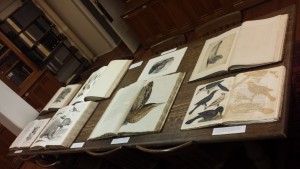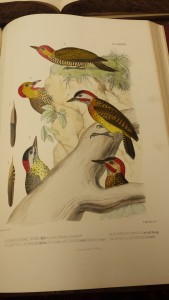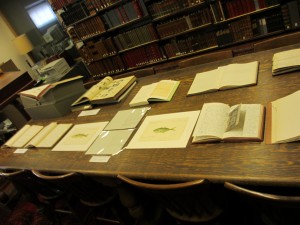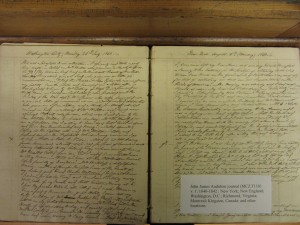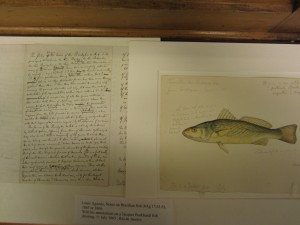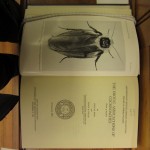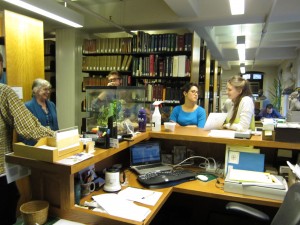Visit from Biology Institute at Exeter
ø
On June 24th, 2015, the library welcomed high school biology teachers from across the United States. Hosted by OEB Prof. Scott Edwards, teachers attending the Biology Institute at Exeter explored the Museum of Comparative Zoology’s Ornithology Collection, the Ernst Mayr Library and the Harvard Museum of Natural History.
Robert Young, Special Collections Librarian, created an exhibit for them in the Special Collections reading room, featuring zoological works from the 18th and 19th centuries. An unexpected treat for the visitors was being allowed to turn the pages! Among many questions asked was: “What is the oldest book in the library?” Answer: Albertus Magnus, De animalibus libri xxvi, Mantua, 1479. For more information on the exhibit contact mayrlib@oeb.harvard.edu.
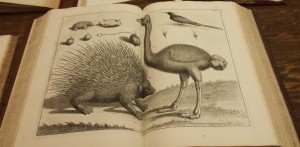
Seba, Albertus (1665-1736). Locupletissimi rerum naturalium thesauri accurata descriptio… vol. 1 (out of 4 v.), 1734-1765.

Nozeman, Cornelius (1721-1785?). Nederlandsche vogelen; vogens hunne huishouding aert… vol. 4 (out of 5 v.), 1770-1829.
